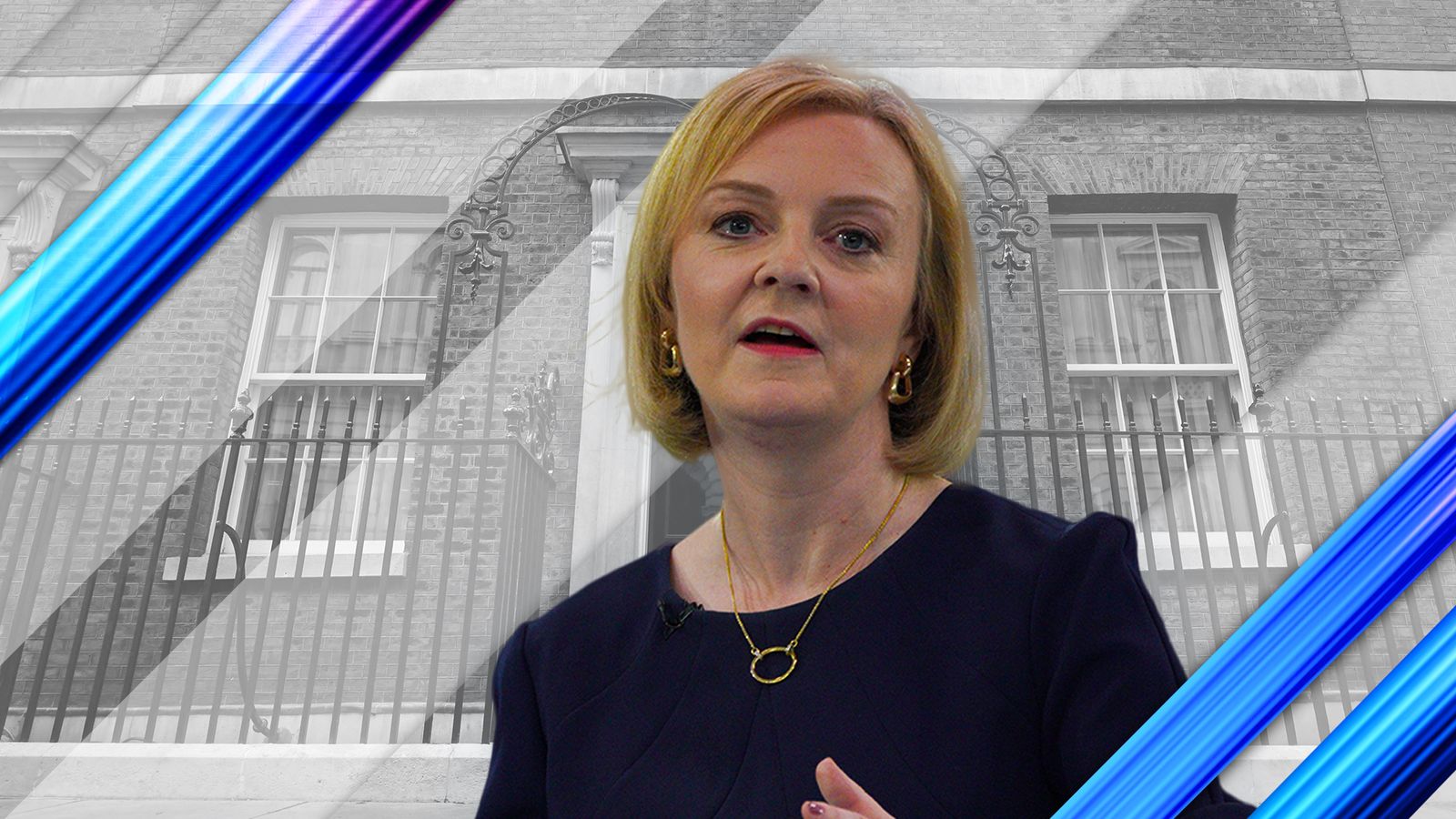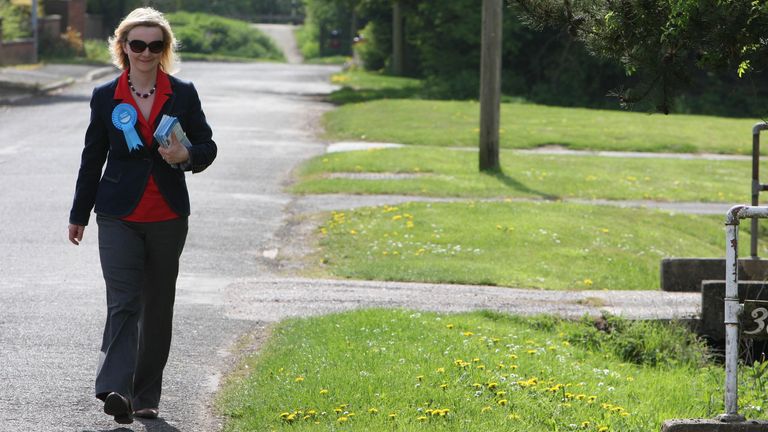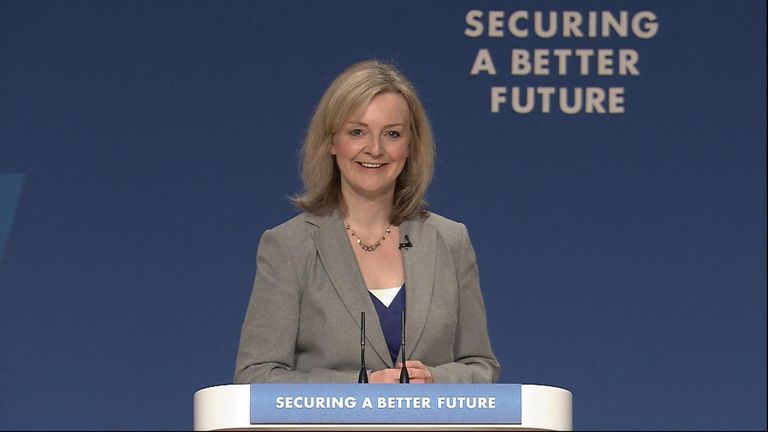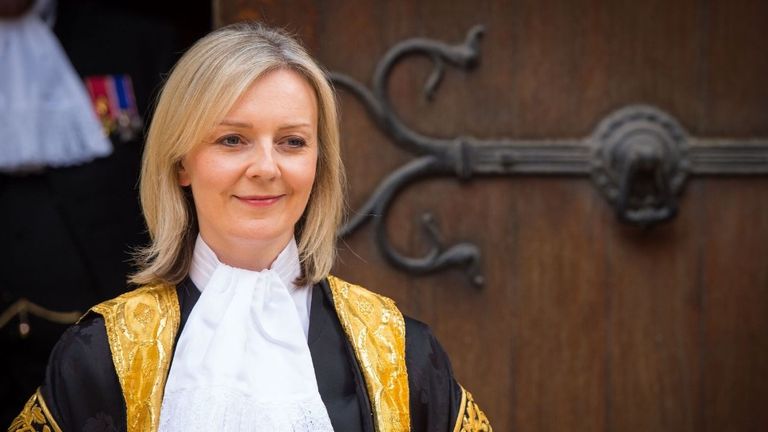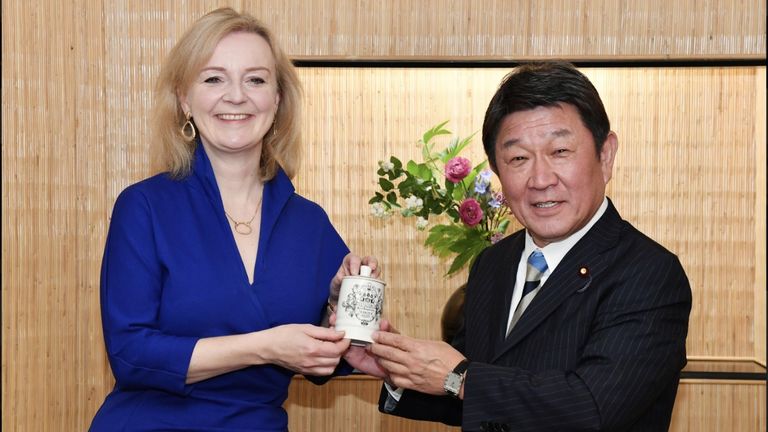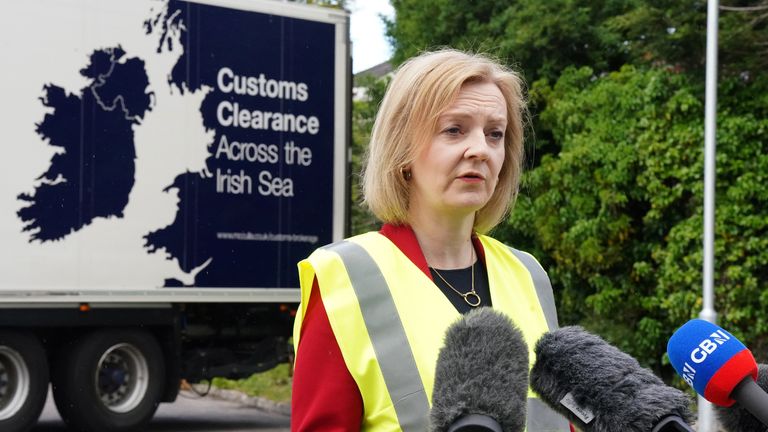After weeks of blue-on-blue battles, Liz Truss looks set to see off her rival Rishi Sunak to win the Conservative leadership race and become prime minister.
But how did the current foreign secretary, who will become only the third female PM if she beats the former chancellor, reach this point?
Early life as the eldest daughter of left-leaning parents
Mary Elizabeth Truss was born in Oxford in July 1975, but was known by her middle name from a young age.
Her father John was a maths lecturer, while her mother worked as nurse. Both were on the left side of the political spectrum – supporting organisations like the Campaign for Nuclear Disarmament and the Green Party.
The eldest of four children and sister to three brothers, her family moved from Oxford to Paisley before heading onto Leeds, with Ms Truss going to state schools in both Scotland and England.
She has since said she saw “children who failed and were let down by low expectations” during her education – although some of those who attended Roundhay School in the leafy Leeds suburb have disputed her recollection.
After a further year of studying in Canada, Ms Truss returned to her birthplace as a student of Merton College in Oxford to study a degree known as the classic route of entry into Westminster – politics, philosophy and economics (PPE).
A surprising first foray into politics
However, it wasn’t Conservative politics that excited her then.
Instead, she joined the Liberal Democrats, becoming the party’s Oxford University President, as well as the national executive committee member representing youth and students.
In this era, she held views that aligned with the membership, from legalising cannabis to scrapping the monarchy – even making a speech about the latter at the party’s annual conference.
But when she graduated in 1996, Ms Truss’ political allegiance had changed and she became a fully fledged member of the Conservative Party, saying later she had realised at Oxford that Tories “didn’t have two heads and were actually good people”.
Despite her growing passion for politics – which also led her to meet her husband, Hugh O’Leary, at the 1997 Tory Party conference – her first rung on the career ladder was training as a chartered management accountant while working for Shell.
Four years later, and now married to O’Leary, she moved to telecoms firm Cable and Wireless and became their economic director, before leaving in 2005.
During this period she got involved with her local Conservative Association in Lewisham and twice tried to become a borough councillor, along with two attempts at becoming an MP in the West Yorkshire seats of Hemsworth (2001) and Calder Valley (2005).
Bumpy journey to becoming an MP
It wasn’t until 2006 that she finally achieved elected office as a Tory councillor for Eltham South, and by 2009, when working as deputy director of thinktank Reform, she was selected to contest South West Norfolk for the Conservatives as one of David Cameron’s leading candidates.
Ms Truss did not have an easy ride to winning her first parliamentary seat.
Members of her local association tried to deselect her shortly before the 2010 election after discovering she had had an affair with another married Tory MP, Mark Field.
The relationship had already been exposed in 2006 by newspapers, but local members claimed they had only found out about it after she had been selected.
Their attempts never came to pass, however, and in May 2010 – and still married to O’Leary – she entered the Commons and began her parliamentary journey to the top job.
‘Britannia Unchained’
Ms Truss’ early days were dominated by constituency issues, such as keeping Tornado aircrafts at her local RAF base and lobbying around the A14, and a focus on education.
By October 2011, she had founded the Free Enterprise Group of Tory MPs, whose now infamous “Britannia Unchained” book saw MPs criticise British workers as “among the worst idlers in the world” – a chapter Ms Truss has since claimed was the work of Dominic Raab.
By 2012, she was appointed to her first junior ministerial post at the Department for Education, and in 2014, she became a secretary of state, taking over the Department for Environment, Food and Rural Affairs.
This appointment led to another notorious moment in her career – a speech espousing her excitement about pork markets in China and deeming the amount of cheese being imported into the UK a “disgrace”.
While she said she believed in climate change and introduced a scheme to try and reverse dwindling bee populations, unlike some of her predecessors, she also cut subsidies for solar panels and, according to recent reports, cut £80m from sewage monitors as part of a £235m axe to the Environment Agency’s budget in the name of “efficiency savings”.
Backs losing side in EU referendum but continues political ascent
The major political event of this time, however, came in 2016 with the EU referendum – and Ms Truss put herself firmly behind her boss Mr Cameron and on the side of Remain.
Now a mother of two, she said she didn’t want her daughters “to grow up in a world where they need a visa or permit to work in Europe, or where they are hampered from growing a business because of extortionate call costs and barriers to trade”.
We all know how the argument played out and Ms Truss found herself on the losing side.
But when the incoming prime minister, Theresa May, took office she found herself landed with a promotion, being named justice secretary and the first woman in its 1,000 year history to ever hold the role of Lord Chancellor.
The position was short lived and come 2017, she was reshuffled into the role of chief secretary to the Treasury under then chancellor Philip Hammond.
During her time in both roles she built up her reputation as a Brexit convert and touted her credentials as a politician on the right of the party, with many believing she was positioning herself for the leadership – especially after blistering attacks on her male cabinet colleagues for their “macho” demands.
However, after Brexit brought down Mrs May in 2019, she did not run to succeed her and threw her backing instead behind Boris Johnson.
There had been rumours Ms Truss would be rewarded with a big promotion, becoming chancellor or perhaps business secretary.
Her eventual role was more low key, taking over as international trade secretary – but still an important role in light of Britain exiting the EU. She later had the women and equalities brief added to her portfolio.
Here Ms Truss continued to trumpet the success that could be made of Britain’s new position in the world, and negotiated the UK’s first post-Brexit trade deal with Japan.
But she came in for criticism too over her dealings with Saudi Arabia, lifting a ban on exporting arms and equipment to the country despite the ongoing conflict in Yemen.
This didn’t damage her position in Mr Johnson’s cabinet though and come September 2021, she was promoted to one of the big offices of state, foreign secretary, becoming only the second woman to hold the role after Labour’s Margaret Beckett.
Despite her once saying in an interview that she wasn’t very diplomatic, this was now a key element of her job as she travelled the world, again with a focus on the UK’s future after Brexit and pushing for more trade deals with other countries.
Her attempts to scrap the Northern Ireland Protocol won plaudits from her own benches, but led to huge criticism from opposition parties and European counterparts, as well as reports of anger from the US.
She had her successes too, namely helping secure the release of Iranian-British citizen Nazanin Zaghari-Ratcliffe and championing support for Ukraine after the Russian invasion in February 2022.
Shaky start as race to succeed Johnson begins
Rumours of leadership ambitions continued to swell in the background, and when the downfall of Mr Johnson came to fruition this summer, there was little doubt she would put herself forward for the top job.
It was a bit of a rocky start for Ms Truss, who is not known as the most consummate and natural performer in front of an audience.
But she got into her stride and after making the final two along with Rishi Sunak at the end of the MPs’ ballots, her campaign has focused on one theme – tax cuts.
Yes, there has been talk of boosting defence spending, being tough on crime, and the multiple tributes to Margaret Thatcher, but her main promise has been that a vote for her is a vote to slash taxes and encourage growth.
She has continually battered the record of Mr Sunak from his time in Number 11, saying as chancellor he had raised taxes to the highest level in 70 years.
And she announced early on that she would scrap the rise in National Insurance – brought in to fund the NHS and social care – get rid of planned rises in corporation tax, and pause green levies on energy bills, despite backing the policies previously.
This has proven to be nectar to the Conservative membership – the ones deciding who will win the race for Downing Street – and polls throughout the contest have seen her leaping further and further ahead of Mr Sunak, despite him winning every round in the parliamentary process.
But multiple party stalwarts and economists have questioned whether there is enough money in the coffers for her plans, while the cost of living crisis and looming price hikes have also tripped her up in the wider public arena.
Scrutiny of approach to cost of living crisis
One particularly low point was in an interview with the Financial Times, where she said the “Conservative way” to tackle the problem was lowering taxes, “not giving out handouts”.
However, cutting taxes only impacts those who pay tax in the first place, meaning households on the lowest incomes, those on benefits and pensioners – the ones set to be hardest hit this winter – would not benefit.
The ruling out of direct support led to a huge backlash and even her backers struggled to defend it, leading to an eventual U-turn where she said she would look at all options if she becomes PM.
But as we wait for the winner’s name to be read out on 5 September, the detail of what support would be on offer is still not clear.
It has not been the only stumble of her campaign.
Ms Truss was forced into a screeching U-turn over her plans for public sector pay.
She claimed she could save the tax payer £8.8bn by introducing regional pay boards instead of national ones to set salaries for civil servants, reflecting where they lived.
But this would mean paying government employees in poorer parts of the country less than their counterparts in more affluent areas, such as the South East and London.
Experts warned to reach the sum, the plan would have to branch out further than government departments, with the likes of teachers, nurses and police officers also facing lower wages than workers in the South.
Tory MPs were up in arms, opposition parties leapt on the airwaves, and the public were far from thrilled by the proposal.
So, while she insisted there had been a “wilful misrepresentation” of her plans – despite what it said in the press release – she scrapped the policy altogether.
Read more:
Truss refuses to apologise for public sector pay policy
What did Truss promise during Sky News’ Battle for Number 10?
The continuity candidate
There is one more thread to Ms Truss’ campaign worth mentioning and one that may have put her on course for victory – her loyalty to Mr Johnson.
To much of the general public, that might seem like a vote loser after his catastrophic fall from grace.
But to Conservative members, the majority of whom wanted him to stay as PM, Mr Sunak’s early part in his demise has been viewed as a decided negative.
By not resigning as the Johnson government crumbled, standing by him in his final days and defending him throughout the contest – as well as hinting many of his policies would continue to live on – Ms Truss became the continuity candidate to follow the unorthodox premier.
Now, she stands on the verge of power.
